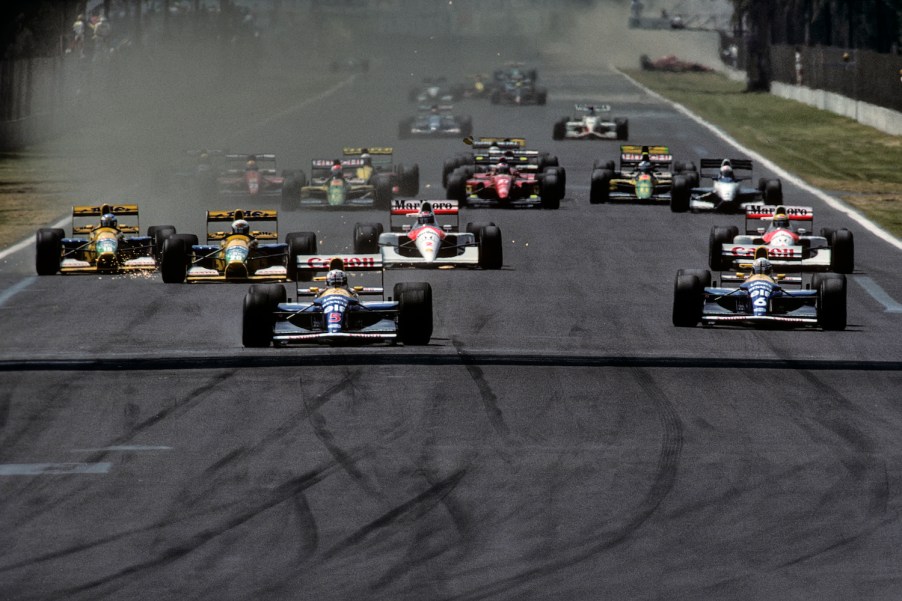
Driver Aids Dominated F1 In the Early 1990s in With This Car
F1 drivers contend with incredibly fast racing cars built to take corners at the highest possible speeds. They do this with massive amounts of downforce from aggressive aerodynamics and big slick tires, accompanied by roughly 1,000-hp turbocharged 1.5-liter V6 hybrid engines. While driving a Mustang GT, you may need traction control to hold onto a corner and ABS to stop on a dime, but an F1 car weighs so little (1,657 pounds) and has so much downforce, it doesn’t need ABS to stop or traction control to keep grip. However, there was a time when F1 cars used every driver aid under the sun, and it was in the early 1990s with the Williams-Renault FW14B.
It started with the Williams-Renault FW14 in 1990
Williams-Renault was the team to beat in the early 1990s. The FW14 was more advanced than any other car on the grid in that year and in several years following. The writing of Williams’ forthcoming dominance was on the wall in 1991 with the FW14’s debut. Nigel Mansell and teammate Riccardo Patrese scored multiple wins and almost had the championship wrapped up had it not been for poor reliability on the part of the new semi-automatic transmission.
The FW14B had every driver aid

1992 was one of the most dominant showings from an F1 team in history thanks to the FW14B. Williams-Renault wrapped up all but seven races and got a podium in most of the rest, out of a 16-race season. It won the constructor’s championship by over 50 points, which was a big deficit in that era’s point system. The 1993 McLaren caught up, but the Williams dominance continued until all the driver aids were banned in 1994.
Williams-Renault FW14B practically steered itself

Possibly the FW14B’s biggest advantage came from its active suspension. AP Racing was developing a system for road cars but decided to bury it, according to Autosport, and gave it to William-Renault. This wasn’t the first time active suspension was used in F1, as Lotus pioneered it in 1983 with its Type 92. Engineering director Patrick Head took AP Racing’s system, which was purely mechanical at the time, and gave it a computer. This allowed the car to balance itself on track.
Active suspension on the FW14B consisted of a hydraulic unit that took wheel and driver inputs and adjusted itself accordingly. It could detect if the driver was going through a corner and flatten the car. It could also detect high speeds and lower the car as much as possible, and stiffen the front end under braking to reduce dive. The FW14B was sophisticated enough to learn the track and anticipate the next corner. All the driver had to do was hit the gas. The result was a car three seconds ahead of the competition in qualifying.
Engineers dominated F1

The Williams-Renault FW14B was, and to some still is, the most advanced Formula 1 car of all time. It’s not hard to see why. When engineers have a stage on which to practice their craft, amazing things can happen.


